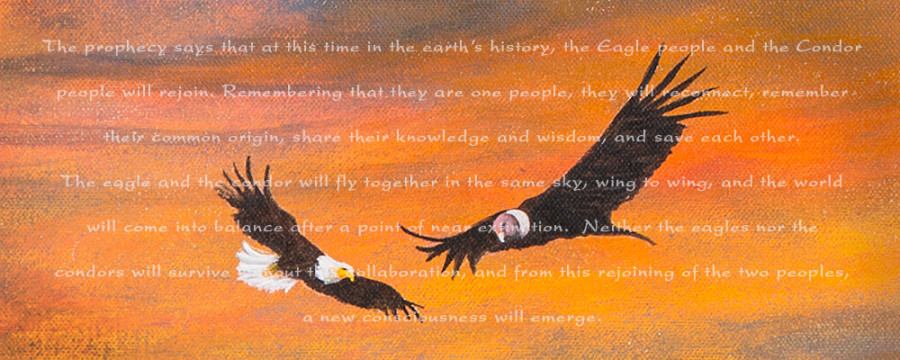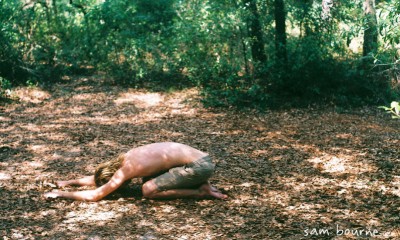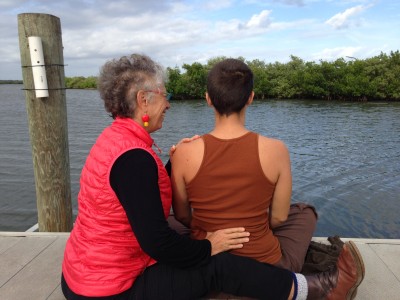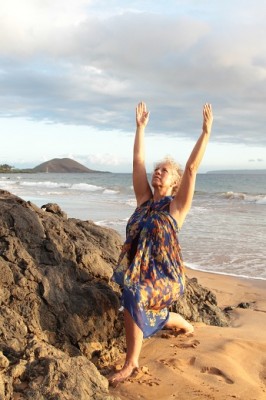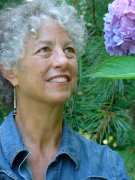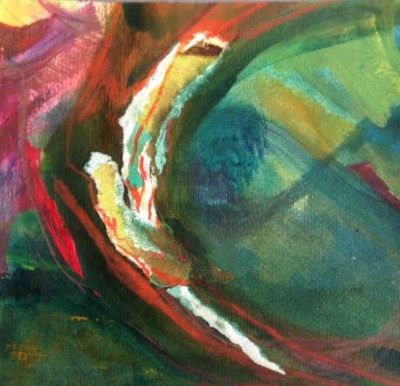 Students come to me to learn how to breathe better for many reasons: to sing or play an instrument with greater ease, to be more in command on stage as an actor, or simply to feel less stressed. But, in truth, breathing coordination offers us much more. The practice can take us underneath the old patterns and emotions locked deep inside us. Often, these patterns and emotions show up to sabotage us when we least expect them. Breathing coordination can release us from these restrictions. It can even free us from inner monsters we didn’t know were controlling our lives.
Students come to me to learn how to breathe better for many reasons: to sing or play an instrument with greater ease, to be more in command on stage as an actor, or simply to feel less stressed. But, in truth, breathing coordination offers us much more. The practice can take us underneath the old patterns and emotions locked deep inside us. Often, these patterns and emotions show up to sabotage us when we least expect them. Breathing coordination can release us from these restrictions. It can even free us from inner monsters we didn’t know were controlling our lives.
I learned this dramatically about 20 years ago, when I was working with Carl Stough, one of my most important teachers. Carl was the founder of the technique of breathing coordination and was known as Dr. Breath. I had been working with Carl for about a year, and each week I could feel improvements. It felt great to be on his table, extending my exhalations so that I had a greater respiratory capacity. It was a gateway to such ease vocally, as well as in movement and in other behaviors. After a session, I used to feel that I could even see better, because so much tension had been released. Sometimes, when I was deeply in the reception space of the breath, I felt like I was surfing waves. There was no lack of continuity between the ease of my breath and the ease of my mind/body.
But I couldn’t seem to sustain that same experience beyond our sessions. Why was that, I wondered? Why would I deprive myself of something so exquisite in my daily life? Why wouldn’t I practice on my own? Why wouldn’t I commit to it?
One day, in a session with Carl, I was in that delightful wave-surfing place, feeling a kind of ease and pleasure I never imagined was possible, when suddenly a thought popped into my head. Without restraint, I blurted out, “HITLER would be so angry if he knew how good I felt right now!” Once those words were out of my mouth, I could hear how absurd they probably sounded. After all, I wasn’t a direct survivor of the Holocaust, although my father had been. And Carl did seem a bit taken aback. He said to me, “Janice, Hitler is dead. Isn’t it time to give it up?” But when I heard those words spoken back to me, something was unleashed in me. For the first time since my father died ten years before, I started to wail and shake with grief.
Through the tears I said to myself, “But to give up Hitler, I have to give up my father.” And at that moment, I understood why my body carried so much tension and rage—in my jaw, in the back of my skull, in my chest. Later I realized that during this session with Carl, my breath had carried me to a critical moment in my healing. Up until this point, my sessions had demonstrated that my diaphragm was getting stronger, that my breath was getting fuller and that the sound of my voice was more resonant. The vibrational frequency I could produce had become more powerful. For the first time, I could sustain tones and, for the first time, actually sing a song and feel the joy of expressing myself with my voice. I felt giddy and full of delight—emotions I had never accessed before.
Until that day, I had not touched or even realized the grief that was living in my body—the grief and anger stored in the tissue and the cells. Physiologically, it was as if I had been in a frozen state since my early years, when I would hear my father recount stories from his days in the camps.
We have all heard of “fight or flight” instincts, but it is important to notice the third option—to freeze—that is also a natural response to emotional or physical trauma. Non-human animals understand how to shake off the freeze response, but we humans have lost the instinct to unfreeze. This is why we need others to help us meet the trauma we hold in our bodies. In order for the body/psyche to release the habitual holding patterns, we need total safety. We need to completely surrender.
And we need the strength that comes with practice. In my case, until that day with Carl—the day I blurted out words about Hitler and then began to cry—I had been in the process of healing, but my diaphragm had not yet been strong enough to support the release of my grief and my tears. I had needed to slowly build the strength of my diaphragm before I could truly release the muscular tensions of chronic freeze.
Since that time, I have made Carl Stough’s breathing coordination the cornerstone of my work in Body Dialogue. What I understand now as a practitioner is this: The breath allows us to drop out of our habitual understanding of ourselves. Through breathing properly, we can literally change our physiology and enter a different state of knowing ourselves. Our experience of our identity can actually shift. If we are breathing from a place of absolute ease, with no effort, the old tension patterns (that have been so much a part of our personality) can re-organize in such a way that we respond to that old identity from a new reference point. This process allows the habitual thinking and habitual preoccupations of mind to let go of their hereditary grip.
Every time we move out of that tension pattern and experience ourselves from a less confined and restricted experience, we can tap into a place within ourselves that is not ruled by the protective complex that allowed us to survive but is now holding us back. My blurted-out words about Hitler revealed to me that I was still being controlled by an old habitual pattern of mind that basically prohibited pleasure. The experience also allowed me to drop my unconscious assumption that my father and his experiences were in charge of my life.
For more on Carl Stough’s work, see BreathingCoordination.com.





